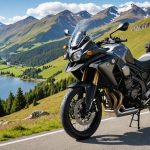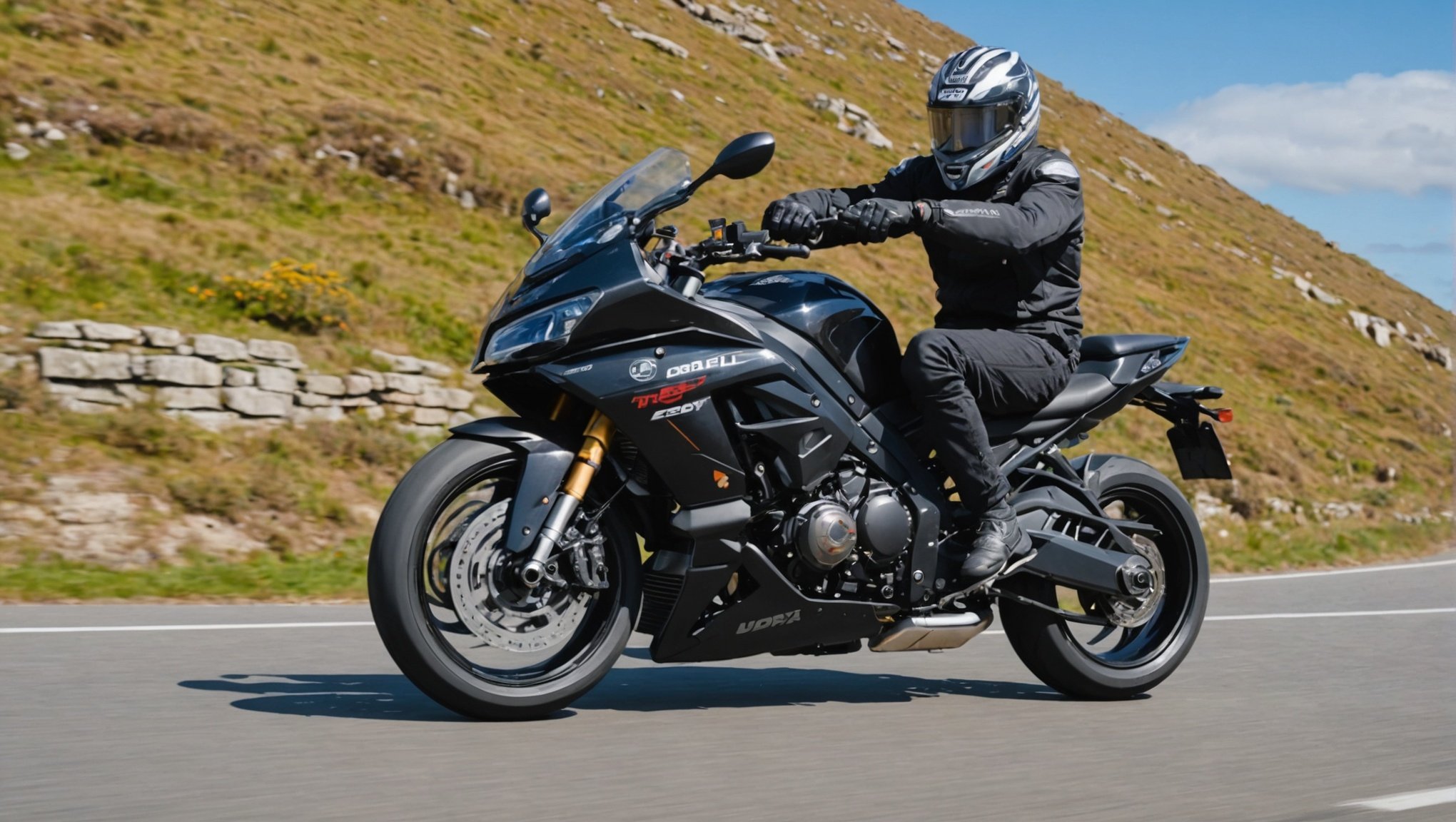Optimal Tire Pressure for Sport Bikes Riding UK Coastal Roads in Summer: A Complete Guide
Understanding the Importance of Tire Pressure
When it comes to riding sport bikes, especially along the scenic and often challenging UK coastal roads, getting the tire pressure right is crucial. It’s not just about safety; it’s also about performance, comfort, and the overall riding experience.
“Tire pressure is one of the most critical adjustments you can make to your bike,” says a seasoned cyclist from Bicycling magazine. “It affects everything from rolling resistance and traction to the bike’s handling and stability”.
Also read : Top Sport Bike Touring Saddlebags for Ultimate UK Adventures: A Complete Guide
Factors Influencing Tire Pressure
Several factors need to be considered when determining the optimal tire pressure for your sport bike:
Road Conditions
UK coastal roads can be a mix of smooth asphalt, rough patches, and occasional gravel or sand. For these varied conditions, you need tires that can handle both the smooth and the rough.
In the same genre : Ultimate Guide to Upgrading Your Sport Bike”s Sound System for an Exceptional UK Touring Experience
“For road bikes, especially those with wider tires like the Pirelli P-Zero Race TLR 35 and 40, the right pressure can make a significant difference in how the bike handles on different road surfaces,” explains a cycling expert. “Higher pressures are generally better for smooth roads, but you may need to lower the pressure slightly for rougher surfaces to maintain traction and comfort”.
Weather
Summer riding in the UK can mean anything from sunny days to sudden rain showers. Wet weather, in particular, requires special attention to tire pressure.
“In wet weather, you want to ensure your tires have enough grip to handle the slippery roads. Lowering the tire pressure slightly can increase the contact patch and improve traction, but be careful not to go too low, as this can increase the risk of a blowout,” advises James Harding from Blackcircles.com.
Tire Width and Type
The width and type of your tires also play a significant role in determining the optimal pressure.
“For example, the Trek Aeolus RSL TLR tires have an increased tread cap width, which allows them to pair well with modern road rims. These tires are designed to handle high speeds and varying road conditions, but the correct pressure is key to unlocking their full potential,” notes a review from Bicycling magazine.
How to Determine the Correct Tire Pressure
Determining the correct tire pressure involves a combination of the manufacturer’s recommendations, personal preference, and the specific conditions you’ll be riding in.
Manufacturer’s Recommendations
Always start with the manufacturer’s recommended tire pressure, which can usually be found on the sidewall of the tire or in the bike’s manual.
“Manufacturers like Pirelli and Trek provide recommended pressure ranges for their tires. These are a good starting point, but you may need to adjust based on your specific riding style and conditions,” says a cycling enthusiast.
Personal Preference
Personal preference also plays a role, especially when it comes to comfort and handling.
“Some riders prefer a slightly softer tire for better comfort on rough roads, while others prefer a firmer tire for better performance on smooth roads. It’s about finding the balance that works best for you,” explains a rider who frequently rides UK coastal roads.
Road Testing
The best way to find your optimal tire pressure is through road testing.
“Take your bike out on a typical route and adjust the tire pressure in small increments. Pay attention to how the bike handles, the comfort level, and the traction. This will give you a practical feel for what works best,” advises a cycling coach.
Practical Tips for Adjusting Tire Pressure
Here are some practical tips to help you adjust your tire pressure effectively:
-
Check Pressure Regularly: Make sure to check your tire pressure at least once a week, and before any long ride.
-
“Tire pressure can vary based on temperature and usage, so regular checks are essential,” notes a mechanic.
-
Use a High-Quality Pressure Gauge: Invest in a good quality pressure gauge to ensure accurate readings.
-
“A reliable pressure gauge is crucial for getting the right pressure. Cheap gauges can give inconsistent readings,” warns a cycling expert.
-
Consider the Load: If you’re carrying a heavy load or riding with a passenger, you may need to increase the tire pressure.
-
“For motorcycle riders, especially those on bikes like the Harley Davidson, carrying a passenger or heavy luggage requires higher tire pressures to maintain stability and safety,” advises James Harding.
-
Adjust for Different Tires: Different tires have different pressure requirements. For example, mountain bike tires and road bike tires have distinct pressure ranges.
-
“Mountain bikes, with their wider and more aggressive tires, typically require lower pressures than road bikes to handle off-road terrain,” explains a mountain biker.
Detailed Guide to Tire Pressures for Common Bike Types
Here is a detailed guide to help you understand the optimal tire pressures for different types of bikes:
Road Bikes
| Tire Width | Recommended Pressure Range | Conditions |
|---|---|---|
| 23-25mm | 100-120 PSI | Smooth roads, dry weather |
| 28-30mm | 90-110 PSI | Mixed road conditions, occasional wet weather |
| 35-40mm | 80-100 PSI | Rough roads, frequent wet weather |
Mountain Bikes
| Tire Width | Recommended Pressure Range | Conditions |
|---|---|---|
| 2.1-2.3 inches | 20-30 PSI | Dry trails, smooth terrain |
| 2.3-2.5 inches | 18-28 PSI | Mixed trail conditions, occasional wet weather |
| 2.5-2.7 inches | 15-25 PSI | Rough trails, frequent wet weather |
Fat Bikes
| Tire Width | Recommended Pressure Range | Conditions |
|---|---|---|
| 3.8-4.0 inches | 5-15 PSI | Snow and ice |
| 4.0-4.2 inches | 5-12 PSI | Sand and loose terrain |
| 4.2-4.5 inches | 4-10 PSI | Mixed off-road conditions |
Examples and Anecdotes
A Day on the UK Coastal Roads
Imagine a sunny summer day riding along the UK coastal roads on your sport bike. The roads are a mix of smooth asphalt and rough patches, with occasional gravel and sand. You’re riding a road bike equipped with Pirelli P-Zero Race TLR 35mm tires.
“For this ride, I set my front tire pressure to 90 PSI and the rear to 95 PSI. This gave me the perfect balance of comfort and performance. The tires handled beautifully on the smooth sections and provided excellent traction on the rougher parts,” recounts a rider.
Mountain Bike Adventure
If you’re venturing into the mountains, the scenario changes significantly. You’re now on a mountain bike with Vittoria Mezcal XC tires.
“I set my tire pressure to 22 PSI for the front and 25 PSI for the rear. This allowed me to navigate the rough trails with ease, and the lower pressure gave me the grip I needed on the loose terrain,” says a mountain biker.
Finding the optimal tire pressure for your sport bike is a process that requires some experimentation and understanding of the various factors involved. By following the manufacturer’s recommendations, adjusting based on road conditions and personal preference, and regularly checking your tire pressure, you can ensure a safe, comfortable, and performance-enhanced ride.
“Remember, the right tire pressure can make all the difference in your riding experience. It’s worth the time and effort to get it just right,” advises a cycling expert.
Additional Resources
For those looking to delve deeper into the world of bike tires and pressure, here are some additional resources:
- Bicycling Magazine’s Gear of the Year 2024: This article provides detailed reviews of various bike components, including tires, and offers insights into their performance and optimal usage.
- Blackcircles.com Tyre News: This site offers comprehensive guides and comparisons of different motorcycle and bike tires, including advice on tire pressure and maintenance.
- Rotor UK Blog: This blog provides in-depth articles on cyclocross racing and bike maintenance, including tips on optimizing tire pressure for different conditions.
By leveraging these resources and following the practical tips outlined above, you’ll be well on your way to enjoying the best possible ride on your sport bike, whether you’re cruising along the UK coastal roads or tackling the challenging trails of the mountains.


















